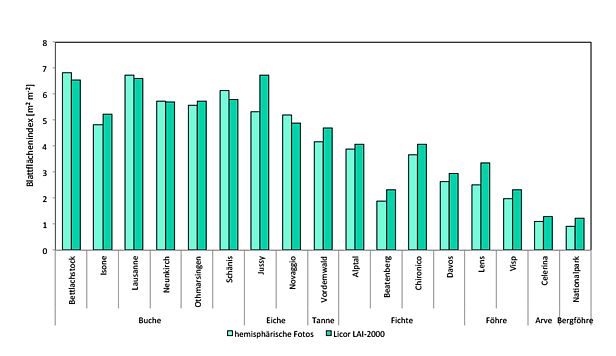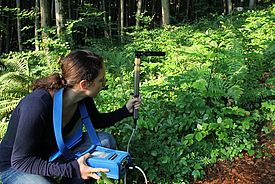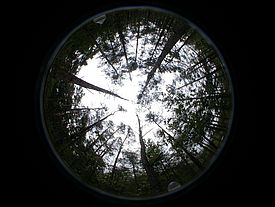The leaf area index (LAI) is defined as the one-sided green leaf area per unit ground surface area. In other words, it indicates how many layers of leaves would be on the ground if they would all fall down and be arranged exactly side by side. It is an important indicator of stand structure and has a major influence on processes such as photosynthesis, precipitation interception, evapotranspiration or deposition of air pollutants.
When modelling ecosystem processes, LAI is an important input variable for simulating the carbon or water cycle in forests. It also describes the light conditions on the ground, which is an important factor for regeneration and vegetation development in the forest. We measure LAI during the ground vegetation surveys on LWF sites and apply two methods :
- a digital camera with fisheye lens takes hemispherical photos of the canopy from below;
- an optical sensor (Plant Canopy Analyser LAI-2000 by LiCor) measures the scattered light (wavelength < 490 nm) below the canopy and outside the forest.
Both methods can be used to calculate the light transmission or the proportion of crown gaps in order to assess LAI. We take hemispherical photos and make Licor measurements over each of the 16 vegetation quadrats (16 x 1 m2) in the intensive monitoring area.


